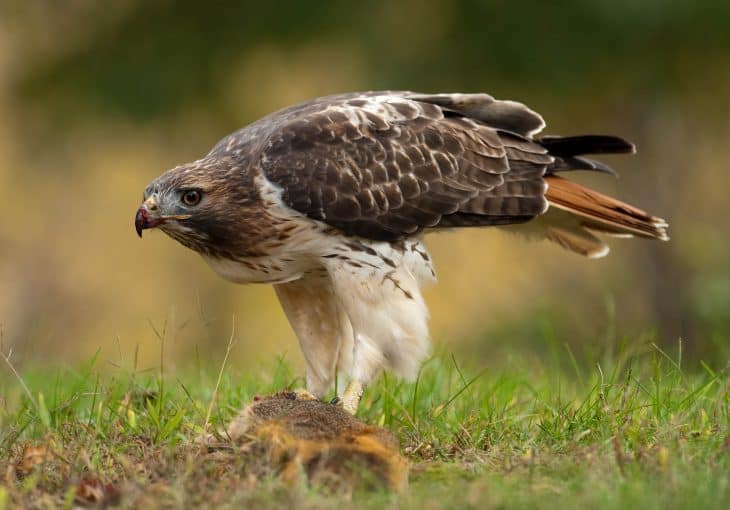
Red-tailed hawks basically make up the poster boys for all hawks in general. They’re so common that when people hear the word ‘hawk’, the image that comes to mind would belong to the red-tailed hawk. They might not even recognize the bird as belonging to the species, but it wouldn’t change the fact. Learn more about this great bird of the Americas with these 50 red-tailed hawk facts.
- Red-tailed hawks can weigh from an estimated minimum of 600 grams to a maximum of 1.6 kg.
- They can measure up to 141 cm wide from the end of 1 wing to the end of their other wing.
- In contrast, their bodies only grow between 45 and 65 cm long.
- Females also tend to grow bigger than males, with up to 25% more weight.
- Red-tailed hawks also have up to 14 different subspecies.
- Fossil evidence points to the red-tailed hawk’s ancestors coming from either Africa or South Asia.
- Scientists consider the red-tailed hawk the result of several million years of evolution.
- Johann Gmelin first named them Falco jamaicensis in 1788.
- He also noted similarities between them and John Latham’s cream-colored buzzard.
- In 1799, Bernard de Lacepede renamed them to the modern Buteo jamaicensis.
- The rufous tailed hawk originally counted as 1 of the red-tailed hawk’s subspecies.
- Modern scientists now consider it a separate, but still closely related species.
- They also once saw the common buzzard as Eurasia’s equivalent to the red-tailed hawk.
- However, all buzzards now have a separate, but still closely related species complex.
- They also have similar relationships with other predatory birds in Africa.
- The difference between hawk and buzzard purely comes from geography.
- Buzzards refer to species living in the Old World of Europe, Asia, and Africa.
- Hawks refer to species living in the New World of North and South America.
- All hawk and buzzard species belong in the genus Buteo.
- The genus includes a total of 29 species all over the world.
Was this page helpful?
Our commitment to delivering trustworthy and engaging content is at the heart of what we do. Each fact on our site is contributed by real users like you, bringing a wealth of diverse insights and information. To ensure the highest standards of accuracy and reliability, our dedicated editors meticulously review each submission. This process guarantees that the facts we share are not only fascinating but also credible. Trust in our commitment to quality and authenticity as you explore and learn with us.
